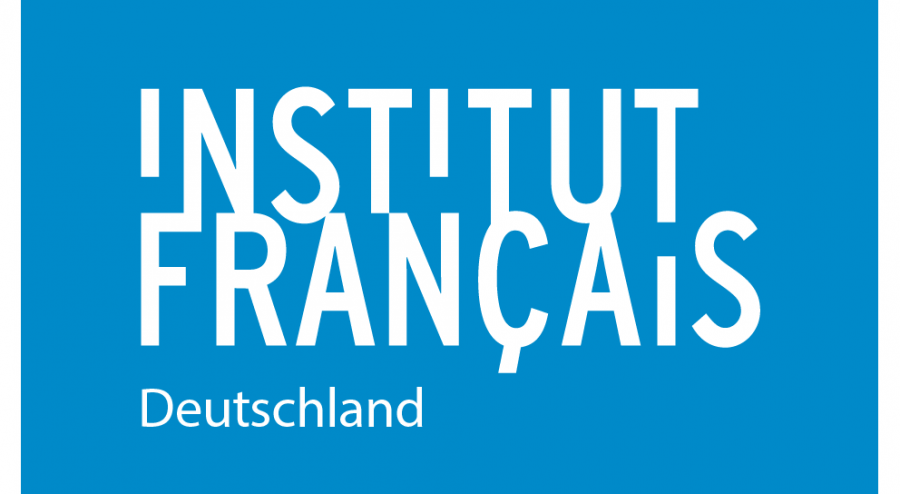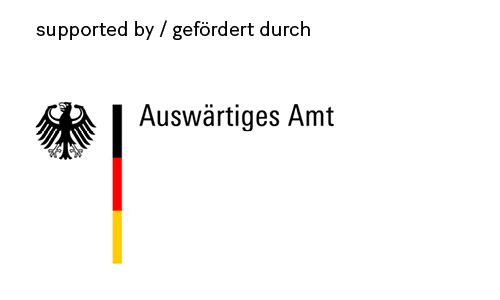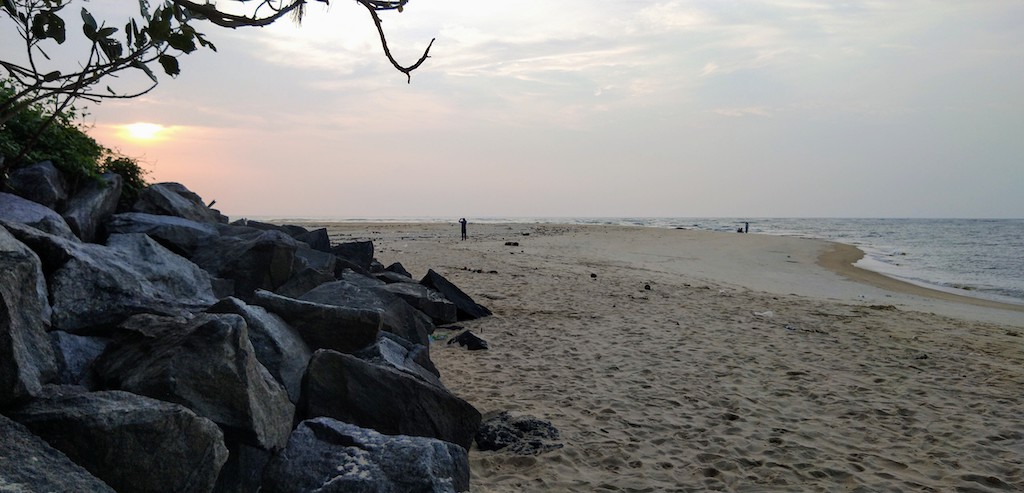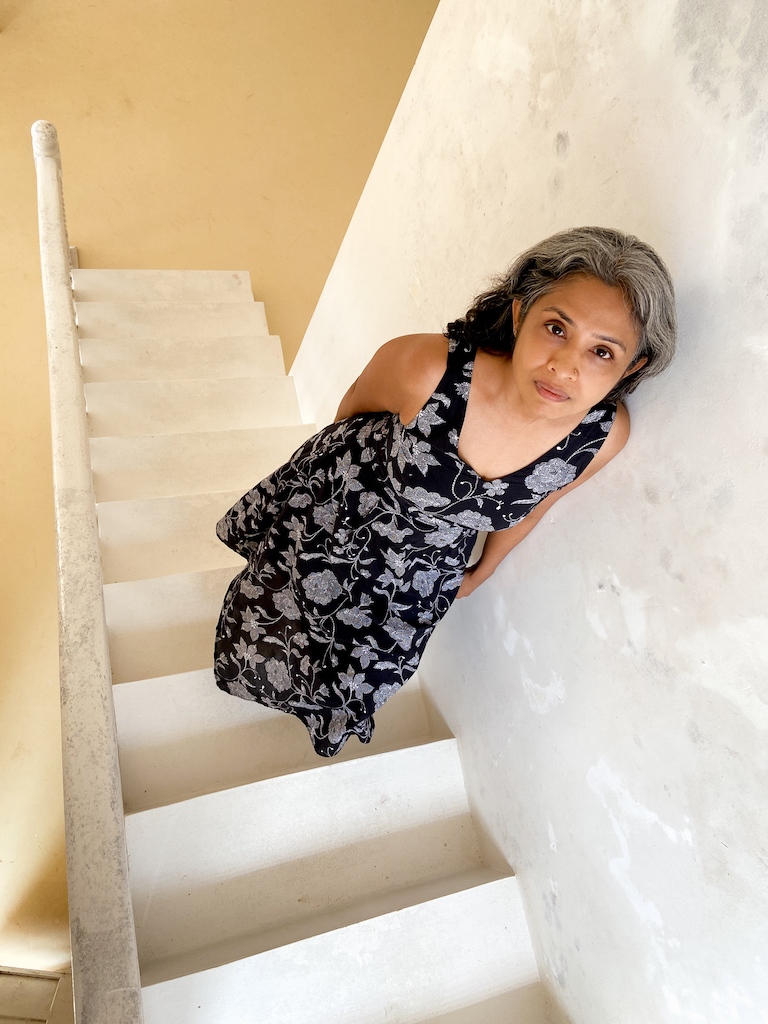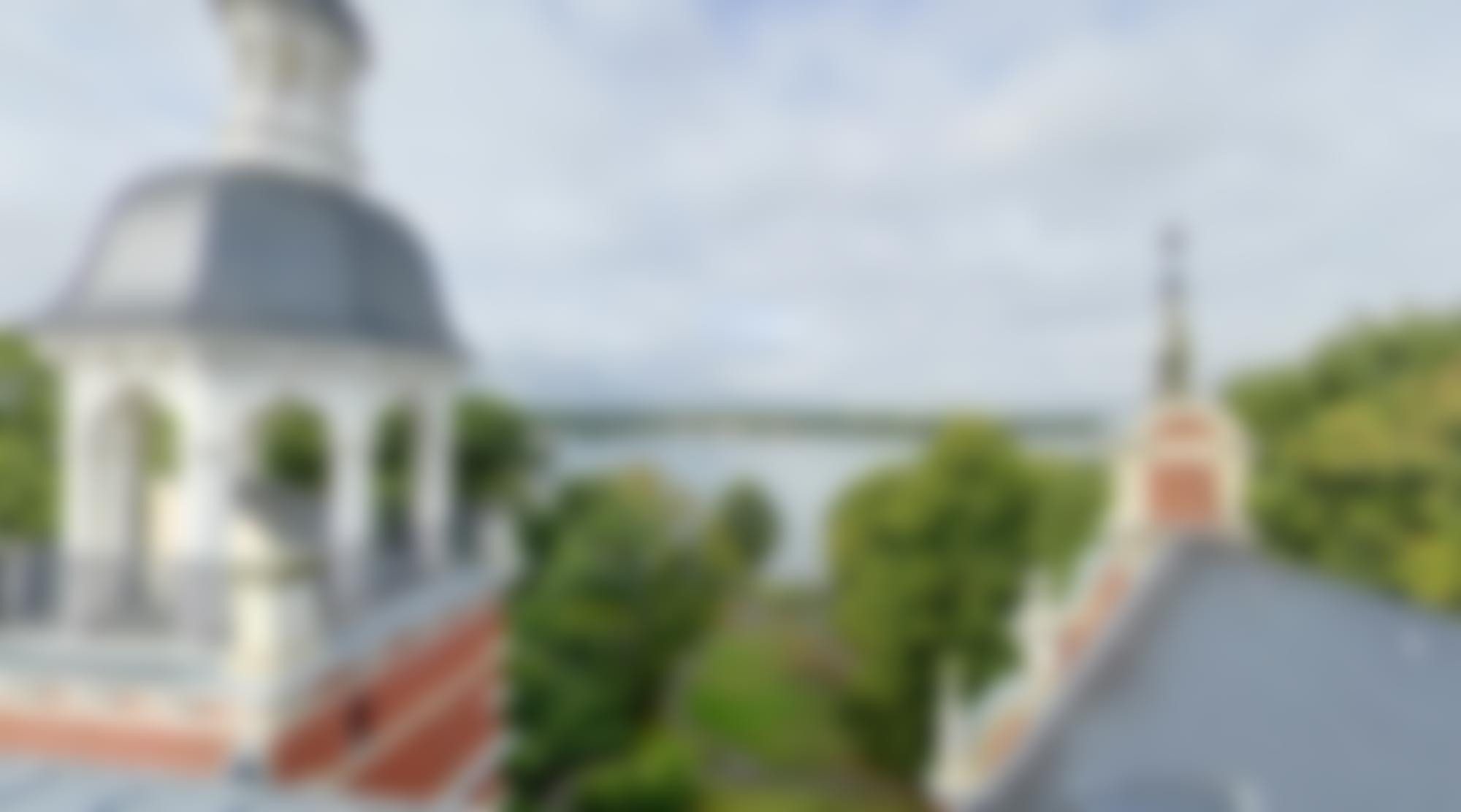Moving Wall and Sea
This has been my happy place for a decade. This estuary where three rivers of the Western Ghats in Karnataka, India, embrace each other just before they seek out the Arabian Sea. This slender finger of land, this resolute red earth that runs alongside pale powdery beach sand, this is where I have come again and again to feed my spirit, to know what it means to stay alive. This is where I have known one of life’s finest privileges, a walk with a ponderous river straight into the luring sea, cool brackish water pushed and pulled into warm salt-laden waves, my feet and breath fully dissolved in this tidal game.
And then one day I am cut off from river as well as sea. Trucks arrive with giant boulders that are dumped along the coastline, stone mined from bowels of hills to become a coarse hemline to the sea. Authorities have decided on a wall, we are told, to prevent erosion of land, to protect the inhabitants, to reinforce the coast. Not everyone agrees and environmentalists caution against the haphazard plan. But few listen when votes are at stake, as also financial gain. What I know and see is the disappearance of sandy shore, the churning of water against rock, the coastline in a forced pantomime. I mourn the end of my watery walk. Are we walled in or is the sea walled out?
The seasons cycle by, temperatures rise, monsoon clouds empty their watery force, cyclone winds visit, and each day the moon inspires a tide. The restrictions imposed by the pandemic, my own reclusion, keep me away from the estuary for months.
When I finally return, I find that the debate of sea and rock has been settled. The river has regained its sandy shoulders and its curve to the sea has become an undulating yellow stretch, broader than I have ever known. The wall of boulders has been scattered like pebbles by a playful child, neither holding in land nor holding out tide. The sea has decided what the sea has decided. It makes its own walls. And once more I stride from river to sea, from rising moon to setting sun.
Übersetzung: Sarita
Verschiebung der Mauer und des Meeres
Dies ist seit einem Jahrzehnt mein glücklicher Ort. Diese Mündung, an der sich drei Flüsse der Westghats in Karnataka, Indien, umarmen, kurz bevor sie das Arabische Meer aufsuchen. Diese schmale Böschung, diese feste rote Erde, die neben blassem, pudrigen Strandsand läuft, dies ist der Ort, an den ich immer wieder gekommen bin, um meinen Geist zu nähren, um zu wissen, was es heißt, am Leben zu bleiben. Hier habe ich eines der wertvollsten Privilegien des Lebens kennengelernt, einen Spaziergang mit einem schwerfälligen Fluss direkt ins lockende Meer, kaltes Brackwasser geschoben und gezogen in warme, salzhaltige Wellen, meine Füße und mein Atem in diesem Gezeitenspiel vollständig aufgelöst.
Und dann bin ich eines Tages sowohl vom Fluss und als auch vom Meer abgeschnitten. Lastwagen kommen an und entladen riesige Felsbrocken entlang der Küste, Steine, die aus den Eingeweiden der Hügel abgebaut wurden, um einen rauen Saum für das Meer zu werden. Die Behörden haben sich für eine Mauer entschieden, sagen sie, um die Erosion des Landes zu verhindern, die Bewohner zu schützen, die Küste zu befestigen. Nicht alle sind damit einverstanden und Umweltschützer:innen warnen vor dem riskanten Plan. Aber nur wenige hören zu, wenn Wählerstimmen und finanziellen Gewinne auf dem Spiel stehen. Was ich kenne und sehe, ist das Verschwinden von Sandstränden, das Aufwirbeln des Wassers gegen den Felsen, die Küste in einer erzwungenen Pantomime. Ich trauere um das Ende meines wässrigen Spaziergangs. Sind wir von innen zugemauert oder ist das Meer von außen zugemauert?
Die Jahreszeiten rasten vorüber, die Temperaturen steigen, Monsunwolken entleeren ihre Wasserkraft, zyklonische Winde kommen und jeden Tag inspiriert der Mond eine Flut. Die Einschränkungen durch die Pandemie, meine eigene Zurückgezogenheit, halten mich monatelang von der Mündung fern.
Als ich endlich zurückkomme, sehe ich, dass die Diskussion zwischen Meer und Fels gelöst ist. Der Fluss hat seine sandigen Schultern wiedererlangt und seine Kurve zum Meer ist zu einem gewellten gelben Streifen geworden, breiter, als ich es je gekannt habe. Die Felsbrocken wurden wie Kieselsteine von einem verspielten Kind verstreut, das weder die Erde zurückhält noch die Flut abstößt. Das Meer hat entschieden, wie das Meer entschieden hat. Es baut seine eigenen Wände. Und wieder schreite ich vom Fluss zum Meer, vom aufgehenden Mond bis zur untergehenden Sonne.
Übersetzung: Linda Farata
बढ़ती दीवार और समुद्र
यह एक दशक से मेरी खुशी की जगह है। यह खाड़ी जहाँ भारत के कर्नाटक में पश्चिमी घाट की तीन नदियाँ अरब सागर में मिलने से ठीक पहले एक दूसरे को गले लगाती हैं। जमीन की यह पतली उंगली, यह दृढ़ लाल धरती जो पीली पाउडरी समुद्रतटीय रेत के साथ चलती है, यही वह जगह है जहाँ मैं अपनी आत्मा को पोषित करने के लिए बार-बार आया हूँ, यह जानने के लिए कि जिंदा रहने के क्या मायने हैं। यही वह जगह है जहाँ मैंने ज़िंदगी के बेहतरीन विशेषाधिकारों में से एक को जाना है, एक सैर एक गंभीर नदी के साथ सीधे लुभावने समुद्र में, ठन्डे खारे पानी का आगे बढ़ना और गर्म-खारी लहरों की और खिंचना, मेरे पैर और साँसे इस ज्वारभाटीय खेल में पूरी तरह से समा गए।
और फिर एक दिन मैंने खुद को नदी और समुद्र दोनों से कटा हुआ पाया। ट्रक विशाल शिलाखण्डों के साथ आते हैं जिन्हें समुद्रतट के किनारे फेंक दिया जाता है, पत्थरों को पहाड़ियों के अन्दर से निकाला जाता है जिससे समुद्र की एक भद्दी किनारी बन जाती है। हमें बताया गया कि अधिकारियों ने भूमि के क्षरण को रोकने के लिए, निवासियों की रक्षा के लिए, तट को सुदृढ़ करने के लिए एक दीवार बनाने का फैसला किया है। हर कोई इससे सहमत नहीं है और पर्यावरणविद इस बेतरतीब योजना के प्रति आगाह कर रहे हैं। लेकिन कुछ ही लोग सुनते हैं: जब वोट दाँव पर हों, या वित्तीय लाभ हो। जो मैं समझता और देखता हूँ वह है रेतीले समुद्रतट का गायब होना, पानी का चट्टान से मथना, तटरेखा का एक जबरन मूक तमाशे में बदल जाना. मैं अपनी पानी की सैर के अंत पर दुखी होता हूँ। क्या हम चारदीवारी में हैं या समुद्र की दीवार बाहर है?
ऋतु चक्र चलता है, तापमान में वृद्धि होती है, मानसून के बादल अपनी जल शक्ति को खो देते हैं, चक्रवाती हवाएँ आती हैं और हर दिन चाँद एक ज्वारभाटे को प्रेरित करता है। महामारी द्वारा लगाए गए प्रतिबंधों ने मुझे महीनों तक खाड़ी से दूर रखा है: मेरा खुद का बहिष्कार।
आखिरकार जब मैं लौटता हूँ तो देखता हूँ कि समुद्र और चट्टान की बहस सुलझा ली गई है। नदी ने अपने रेतीले कंधों को पुनः प्राप्त कर लिया है। समुद्र की तरफ इसका घुमाव एक लहरेदार पीला विस्तार बन गया है, यह इतना व्यापक है जो मैंने पहले कभी नहीं देखा। शिलाखण्डों की दीवार को मानों एक चंचल बच्चे ने कंकड़ की तरह बिखेर दिया हो, जिसकी न तो जमीन के अन्दर पकड़ है और न ही बाहर ज्वारभाटे पर। समुद्र ने सोच लिया है कि उसने फैसला कर लिया है। यह अपनी दीवारें खुद बनाता है। और मैं एक बार फिर नदी से समुद्र की ओर, उगते चाँद से डूबते सूरज की ओर बढ़ता हूँ।
Share



